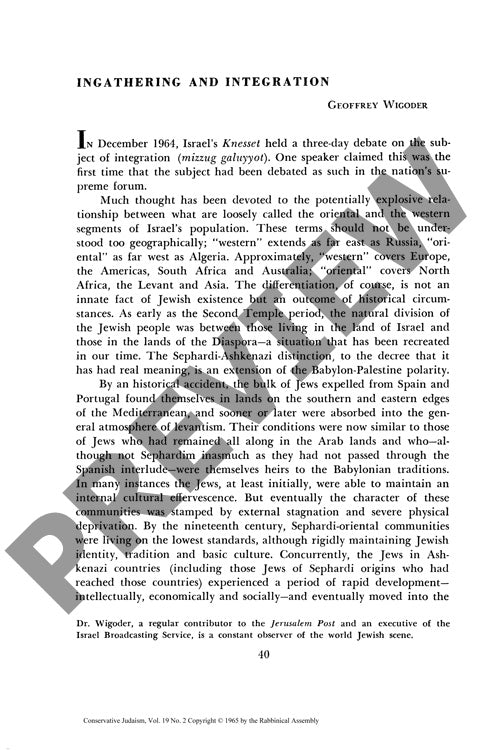Ingathering and Integration
Couldn't load pickup availability
Israel's dramatic population shifts after 1948 sparked deep cultural tensions between Jewish immigrants from "oriental" regions (North Africa, the Levant, and Asia) and their "western" counterparts (Europe, America, South Africa, and Australia) - tensions that would shape the nation's social fabric for decades to come. Drawing upon Israel's Statistical Year-Book, 1964 Knesset proceedings, and Hebrew University sociological surveys, clear patterns emerge of systematic disadvantage faced by oriental immigrants, despite their growing demographic presence from 9.7% in 1948 to 28.7% by 1963. European and American immigrants achieved notably higher rates of professional placement (40% versus 19%) and better housing conditions, while oriental immigrants encountered persistent barriers in education, employment, and social mobility. Statistical analysis reveals these disparities stemmed from structural factors: inadequate educational support systems, economic pressures forcing early workforce entry, and cultural disconnection from Israel's Western-oriented institutional framework. Although official policies proclaimed non-discrimination, natural hierarchies emerged that consistently placed oriental populations at lower socioeconomic levels. While economic integration has shown progress, achieving meaningful social and cultural integration requires addressing systemic educational inequalities and developing more pluralistic approaches that both preserve valuable oriental Jewish traditions and enable advancement within Israel's Western-oriented society.

More Information
-
Physical Description
-
Publication Information
Published 1965
ISBN
-
Publication Credits
Geoffrey Wigoder

